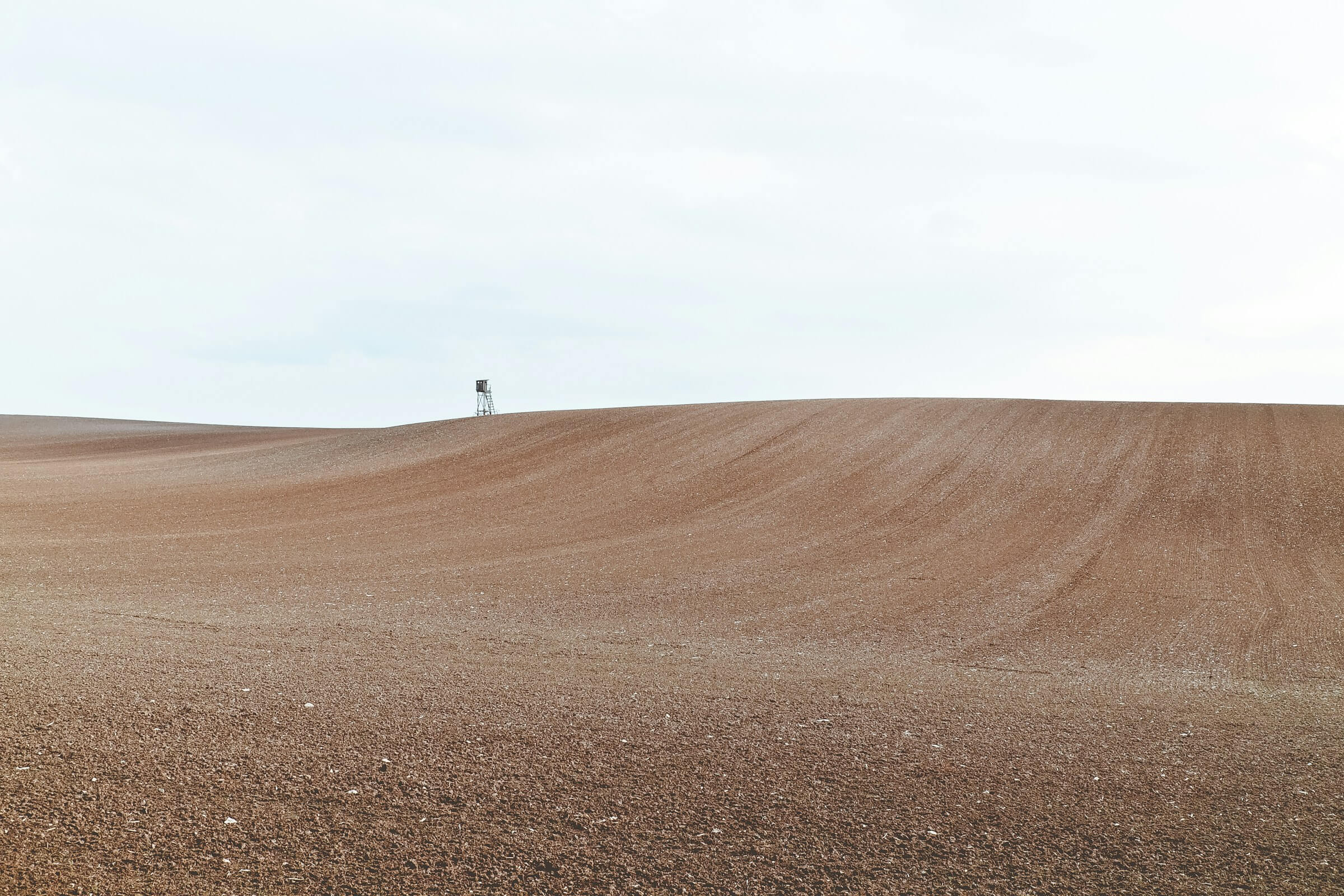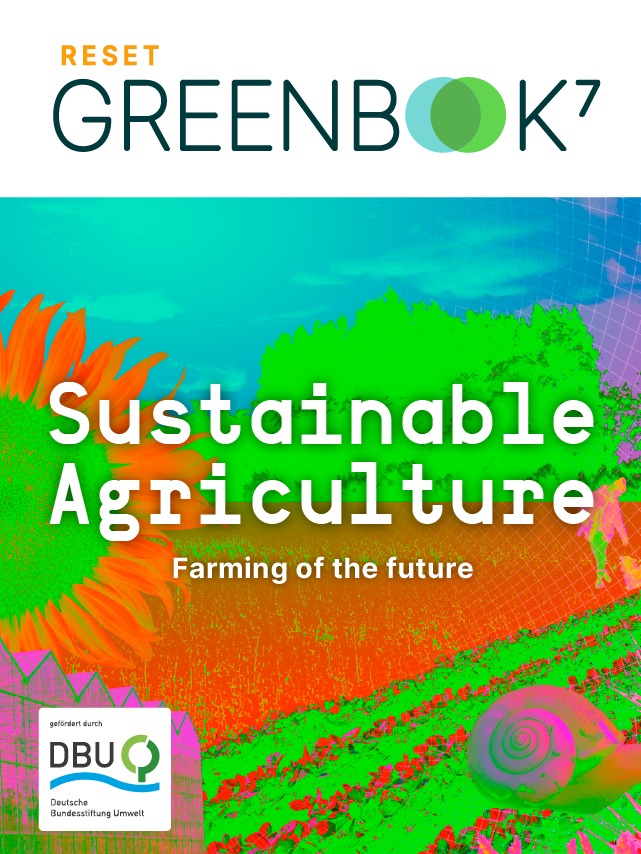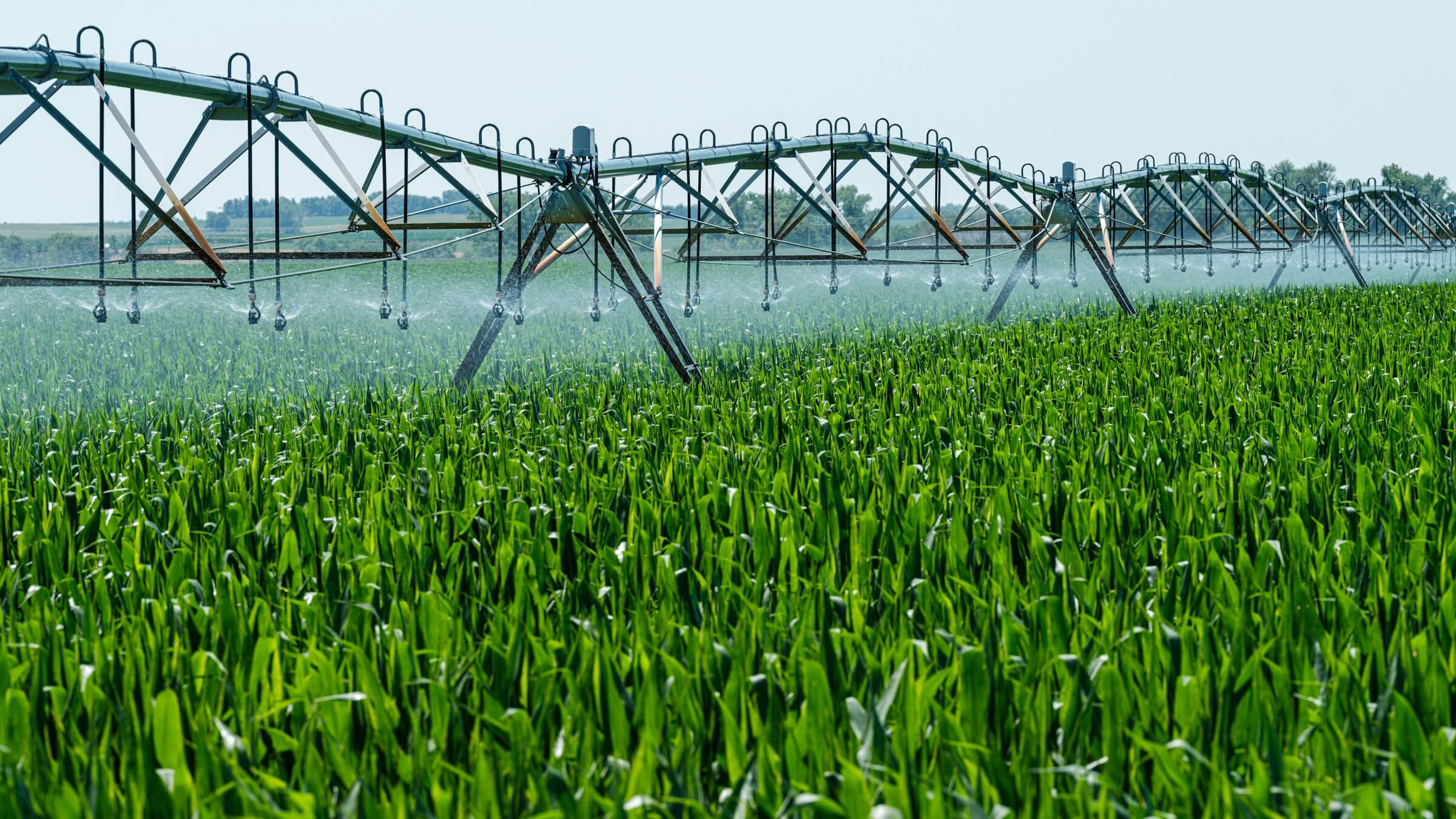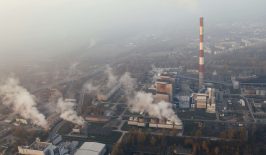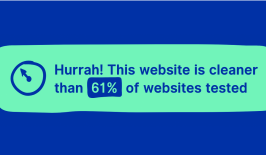When you think of farming, it’s easy to imagine cows munching on green grass in idyllic farms surrounded by fields. Chickens run around the yard, tractors dip around bringing apples to local towns and an abundance of vegetables sprout from neat plots. However, this image has very little to do with reality.
Agriculture and the climate crisis—sufferer, cause and solution
Small farms have been threatened with extinction for a long time now. For the past several decades, agriculture has meant fields stretching to the horizon, where rows and rows of identical plans and monocultures grow and large animals live crowded together in stables.
The pressure on farmers is also growing. On the one hand, agriculture is severely affected by the effects of climate change. Increasingly frequent extreme weather events such as droughts or floods and changing temperatures are causing farmers to struggle with yield losses. And, as agriculture relies on healthy soils and a diversity of pollinators, the rapid loss of species and ecosystems is becoming an increasing threat. For example, In 2019, Biological Conservation reported that 40 percent of all insect species are declining globally.
On the other hand, agriculture itself is a driver of climate change, species extinction and biodiversity loss. According to the OECD, the EU agricultural sector directly generated 383 million tonnes carbon dioxide equivalent (Mt CO2-eq) of GHG in 2020, representing 11 percent of total GHG emissions in the European Union. Around a quarter of this is attributable to methane emissions from livestock farming, particularly cattle. According to the European Environment Agency, agricultural practices are responsible for almost 50 percent of all environmental pollution of air, water and soil in EU countries.
Even though emissions have fallen slightly in recent years, the sector has not yet achieved its climate targets. The Climate Protection Act aims to reduce annual emissions in agriculture to 56 million tonnes of CO2 equivalents by 2030.
Greenhouse gas emissions from agriculture consist primarily of methane and nitrous oxide. These are released during soil cultivation and are produced during digestion in animal husbandry and the storage of manure and slurry. The problem is that these gases have a much greater impact on the climate than carbon dioxide, which is produced when fossil fuels are burned. In order to establish comparability with other sectors, the level of emissions is converted into tonnes of CO2 equivalents.
In addition, around 75 percent of the world’s soils are already affected by degradation and desertification. This means that the soils are severely restricted in their vital functions and are drying out. The cause? First and foremost, this is due to intensive agricultural use and climate change. Europe is not exempt from this. Monocultural farming, intensive animal breeding and over-fertilisation are steadily reducing soil quality across the globe.
Healthy soils are not only an important basis for our agriculture and therefore for everything we put on our plates. Soils are also essential for climate protection and climate adaptation. If they are not managed sustainably, they release large quantities of climate-damaging greenhouse gases. Intact soils, on the other hand, can bind CO2 and store more water, which helps plants survive periods of drought. They also harbour a large number of living organisms and thus help to preserve biodiversity.
More moor!
The draining of peatlands is particularly problematic: according to the Heinrich Böll Foundation’s Soil Atlas, more greenhouse gases were released from the use of drained peatlands in Germany in 2021 than by German industry.
Agricultural businesses in around the world is therefore facing major challenges: To preserve their foundations, they must protect species, soils and the climate. At the same time, these tasks must be harmonised with economic profitability, yield stability and the production of high-quality food.
How does sustainable agriculture work?
It is therefore about nothing less than a socio-ecological transformation of agriculture and the food system. There is a broad scientific consensus that this can be achieved through the following interlinked measures:
Restricting the use of fertilisers and pesticides and consistent measures to protect biodiversity are essential for healthy soils and the preservation of species diversity. It is also important to strengthen organic farming and promote diverse, small-scale agriculture. Regional marketing of products should play a major role in this.
The reduction and reorganisation of the livestock industry, which pays greater attention to animal welfare and focuses on closed nutrient cycles, accompanied by a reduction in the consumption of animal products, will ensure that methane and CO2 emissions fall rapidly. The rewetting of moors is also central to this. At the same time, consumers should be motivated to consume more plant-based, organic and regionally produced food.
Agriculture is facing major challenges: On the one hand, it is severely impacted by biodiversity loss and the effects of climate change. On the other, agriculture itself massively contributes to these issues.How can digital solutions on fields and farms help to protect species, soil and the climate?
We present solutions for a digital-ecological transformation towards sustainable agriculture. Find out more.
How can digital solutions on fields and farms help to protect species, soil and the climate?
We present solutions for a digital-ecological transformation towards sustainable agriculture. Find out more.
The various measures can be achieved through, among other things, fewer climate-damaging subsidies and extensive compensation for measures that protect biodiversity and the climate. Ideally, this would take place within a common EU agricultural policy. In addition, national funding should be made available for the reorganisation of agriculture and regional production, processing and marketing. More information on sustainable nutrition and the environmentally and climate-oriented labelling of food could also ensure that consumers are taken on board.
Digital technologies and applications have already arrived on farms and fields
In practice and science, digitalisation is seen as playing a key role in overcoming many of these challenges in the agricultural sector.
According to a survey, digital technologies and applications are already being used on eight out of ten farms with more than 30 hectares. The most widespread of these are automatic feeders, GPS-controlled agricultural machinery, agricultural apps and farm and herd management systems. Around 30 per cent of farms also use methods and technologies that allow fertilisers and pesticides to be applied only when needed, as well as sensor technology in crop cultivation and animal husbandry. Robotics, drones and artificial intelligence, on the other hand, are not yet as widespread. In general, it can be seen that digital technologies are increasingly being used as farms grow in size.
Digitalisation is seen as an opportunity to increase product efficiency, reduce the need for physical labour and make production more environmentally friendly. This is also reflected at a political level. In the context of the European Green Deal, the “Farm to Fork” strategy and the EU Biodiversity Strategy, among others, the digitalisation of the sector is seen as key to achieving climate and environmental policy goals.
However, the current prioritised use of digital technologies points in a different direction: they are primarily focused on making agriculture more efficient and thus further intensifying it.
Using digitalisation in a socio-ecological way
The opportunities of a digitally supported agricultural sector are currently at the centre of attention – especially for environmental and climate protection. However, the risks are currently still not being considered enough, as a study by the IÖW also points out. In particular, the high investment costs and increasingly complex structures pose new challenges. There are also concerns about the environmental and social impact of digital technologies themselves, such as the further expansion of monocultures, increasing dependence on IT companies and growing energy consumption.
In our latest Greenbook: Sustainable Agriculture, funded by the German Federal Environmental Foundation (DBU), we therefore identify innovative digital solutions that actually aim to protect the environment and climate in the agricultural sector and can drive forward the socio-ecological transformation. And we are asking experts about the opportunities, risks and backgrounds. The aim is to create a picture of what the sustainable digital agriculture of the future will look like, with the preservation of biodiversity and healthy ecosystems at its centre.

